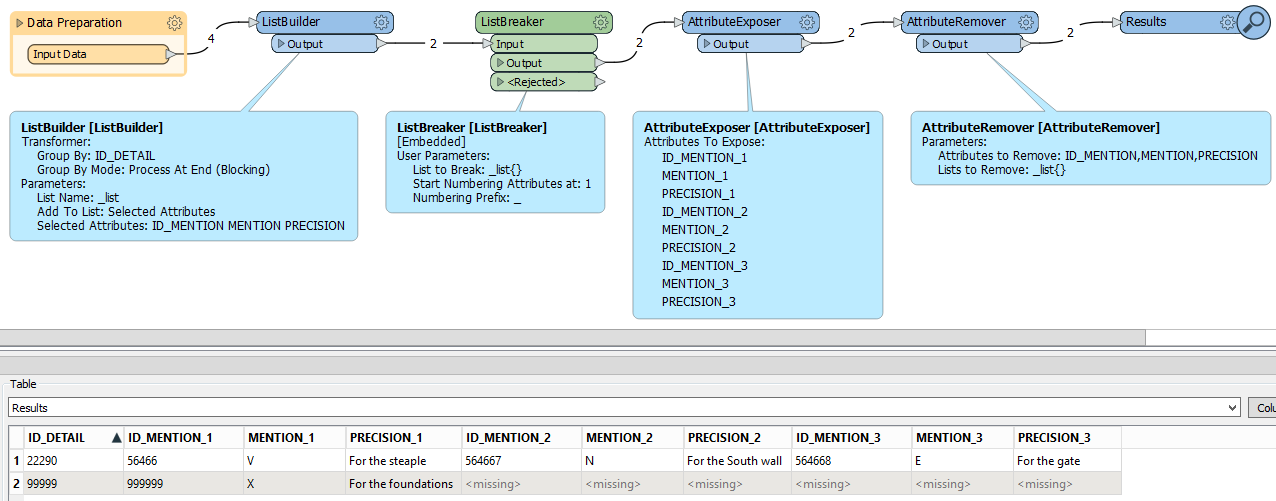Hi,
I need to denormalize rows into repetitive numbered columns. Here's an example.
Here is the normal version as it is in the relational db. Note that the three rows all have the same value in ID_DETAIL field.
 Here is the desired result. Note that for this one DETAIL, we end up with three groups of columns (ID_MENTION, MENTION, PRECISION).
Here is the desired result. Note that for this one DETAIL, we end up with three groups of columns (ID_MENTION, MENTION, PRECISION).
 How would one do this in FME ?
How would one do this in FME ?
The number of repetitive groups of columns would be defined by the detail in the dataset having the most mentions (in my example it was 3).
I was thinking of some kind of grouping on ID_DETAIL and some kind of "for-each-loop". But any better suggestion appreciated !










